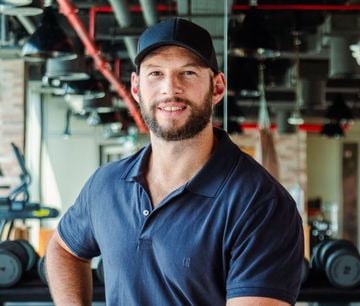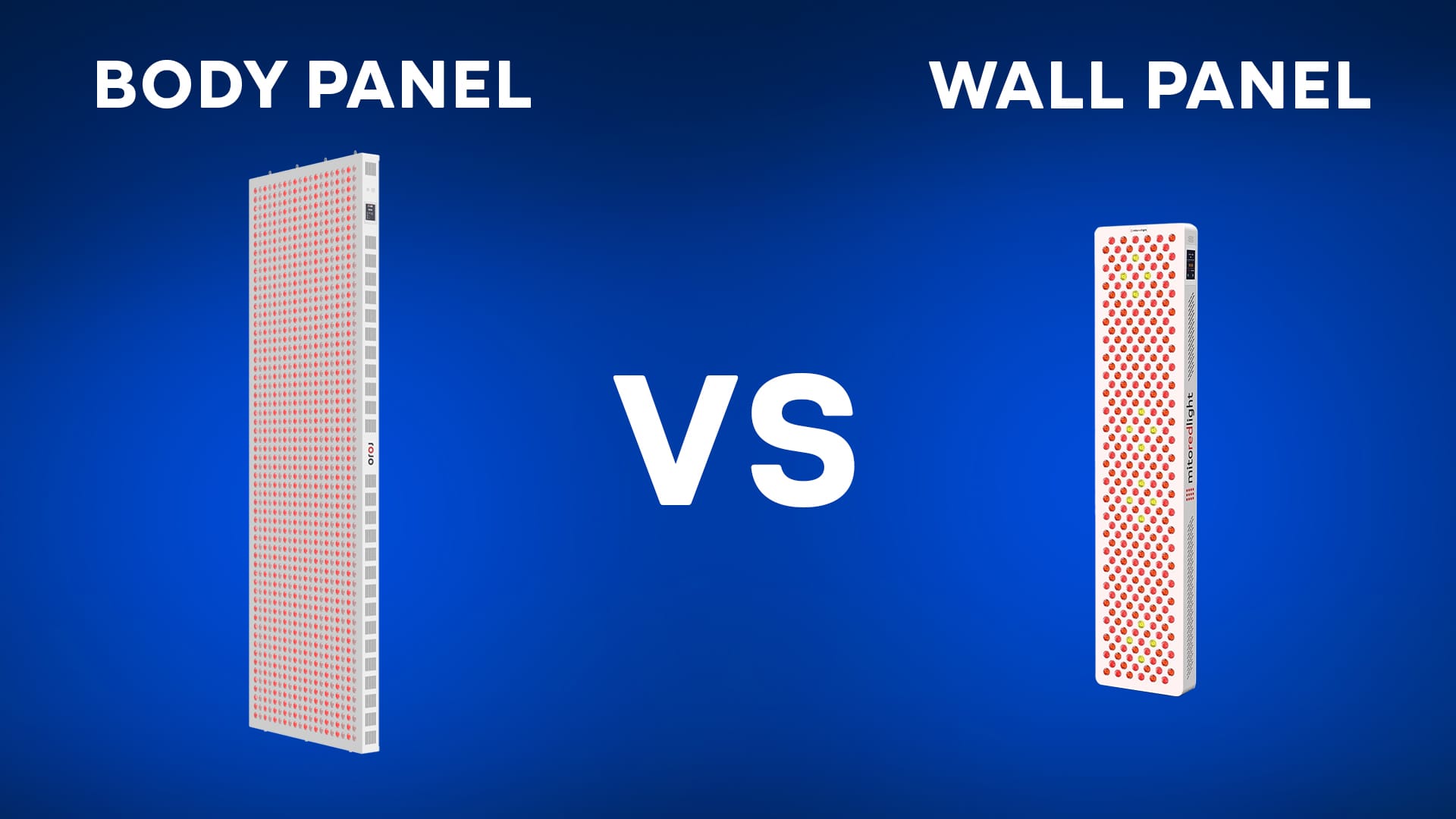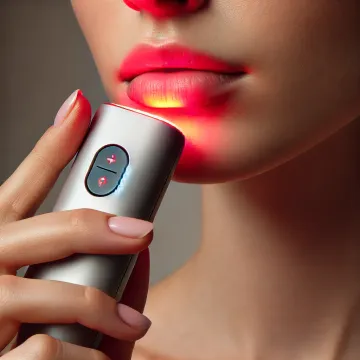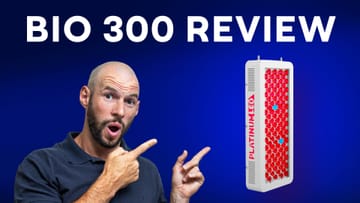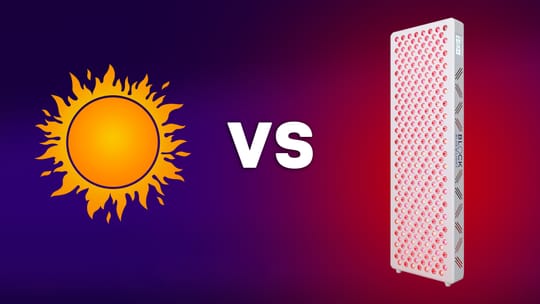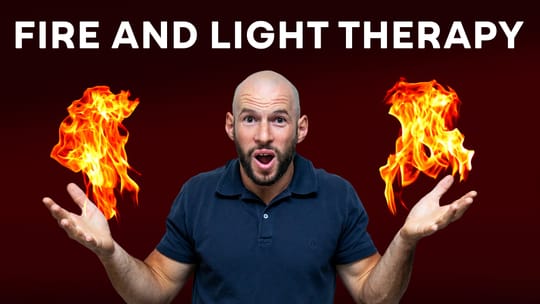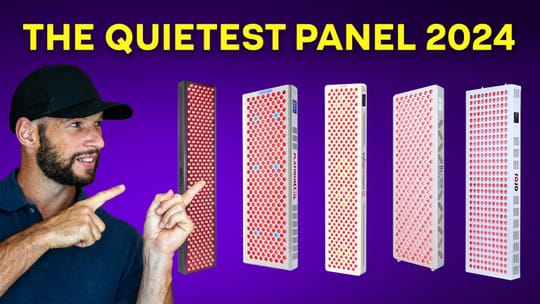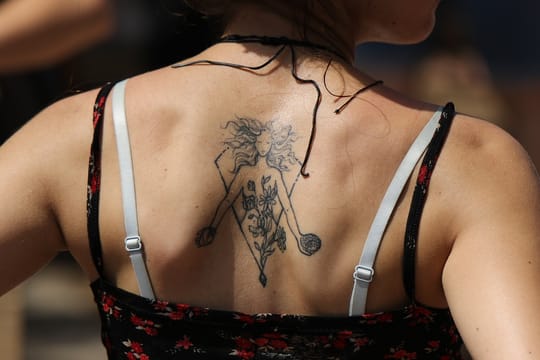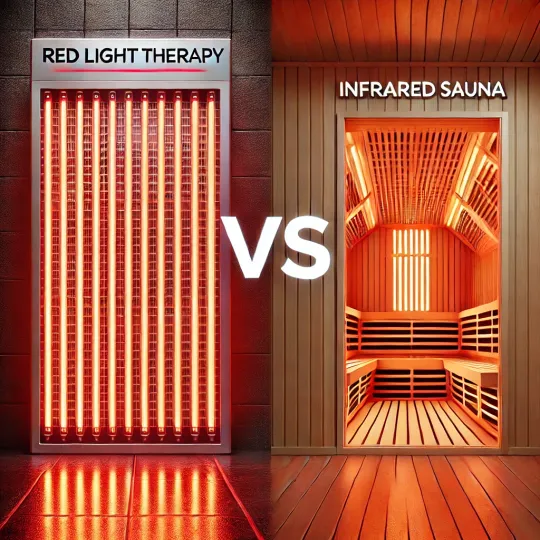Many factors are involved in deciding between a small 300-LED red light therapy panel and a massive 1200-LED full-body panel. Let’s explore the pros and cons, practical considerations, and strategic approaches to help you decide based on your needs and circumstances.
Why Bigger Panels Offer More Benefits
A larger panel is often the best choice for those looking to maximize the advantages of red light therapy. Full-body panels provide comprehensive coverage, efficiently treating the entire body.
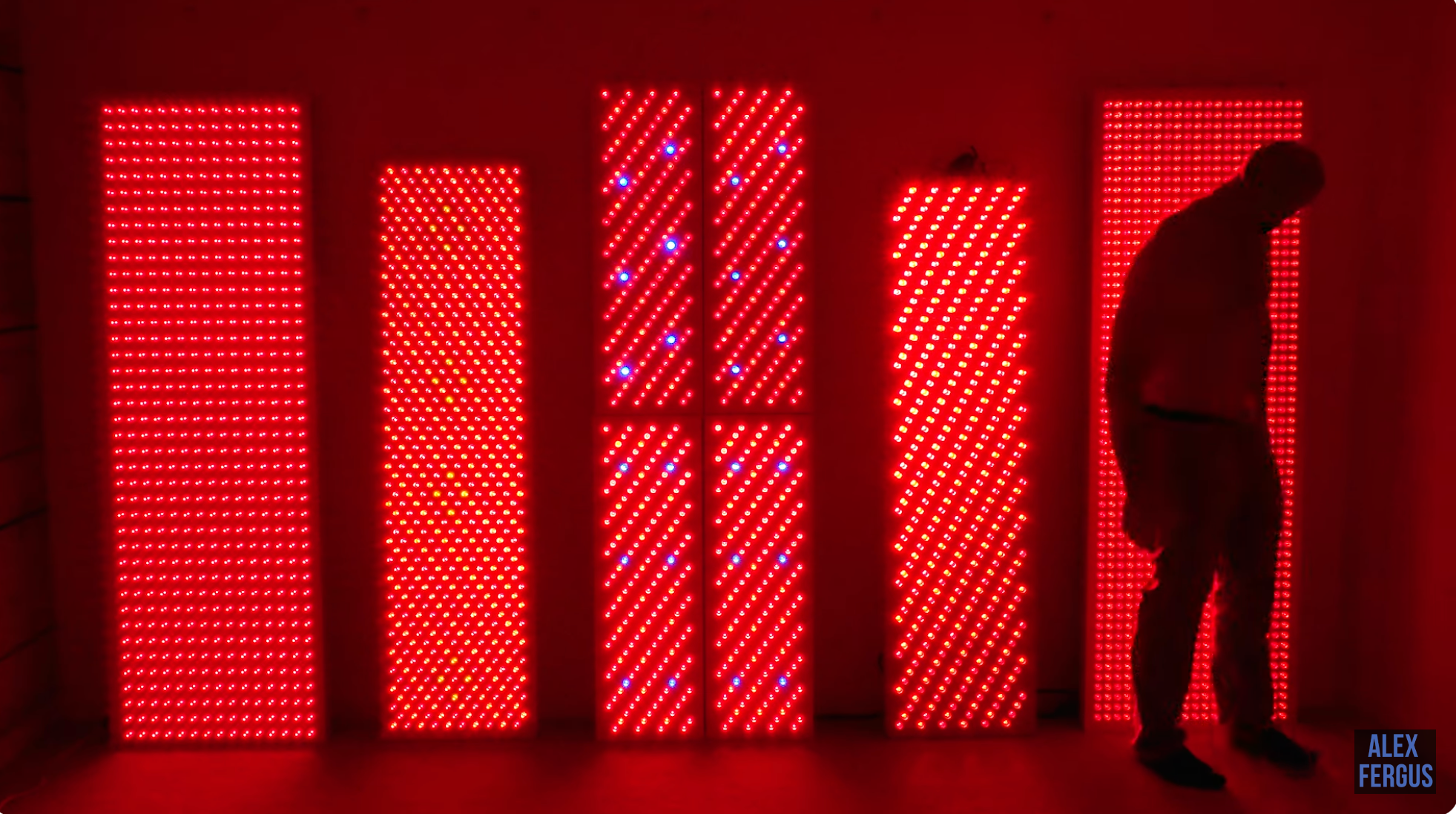
Imagine standing in front of a 1200-LED panel: in just a few minutes, you’ll achieve head-to-toe and shoulder-to-shoulder exposure. This setup is ideal for anyone wanting to:
- Optimize cellular function across the entire body.
- Recover from intense workouts.
- Address widespread skin concerns like sunburn.
In contrast, smaller panels can only cover a limited area at a time. Treating both shoulders, knees, or just the front and back of your body would require repeatedly repositioning the panel. This not only takes more time but can also disrupt the consistency of your therapy sessions.
Extensive Testing: Understanding Panel Performance
Over the past six years, I’ve tested more than 70 red light therapy panels, ranging from small, portable devices to extensive full-body arrays. This hands-on experience has revealed a crucial insight: the light from smaller panels remains concentrated directly in front of the LEDs. The intensity diminishes as you move farther from the panel, reducing the therapeutic benefits.
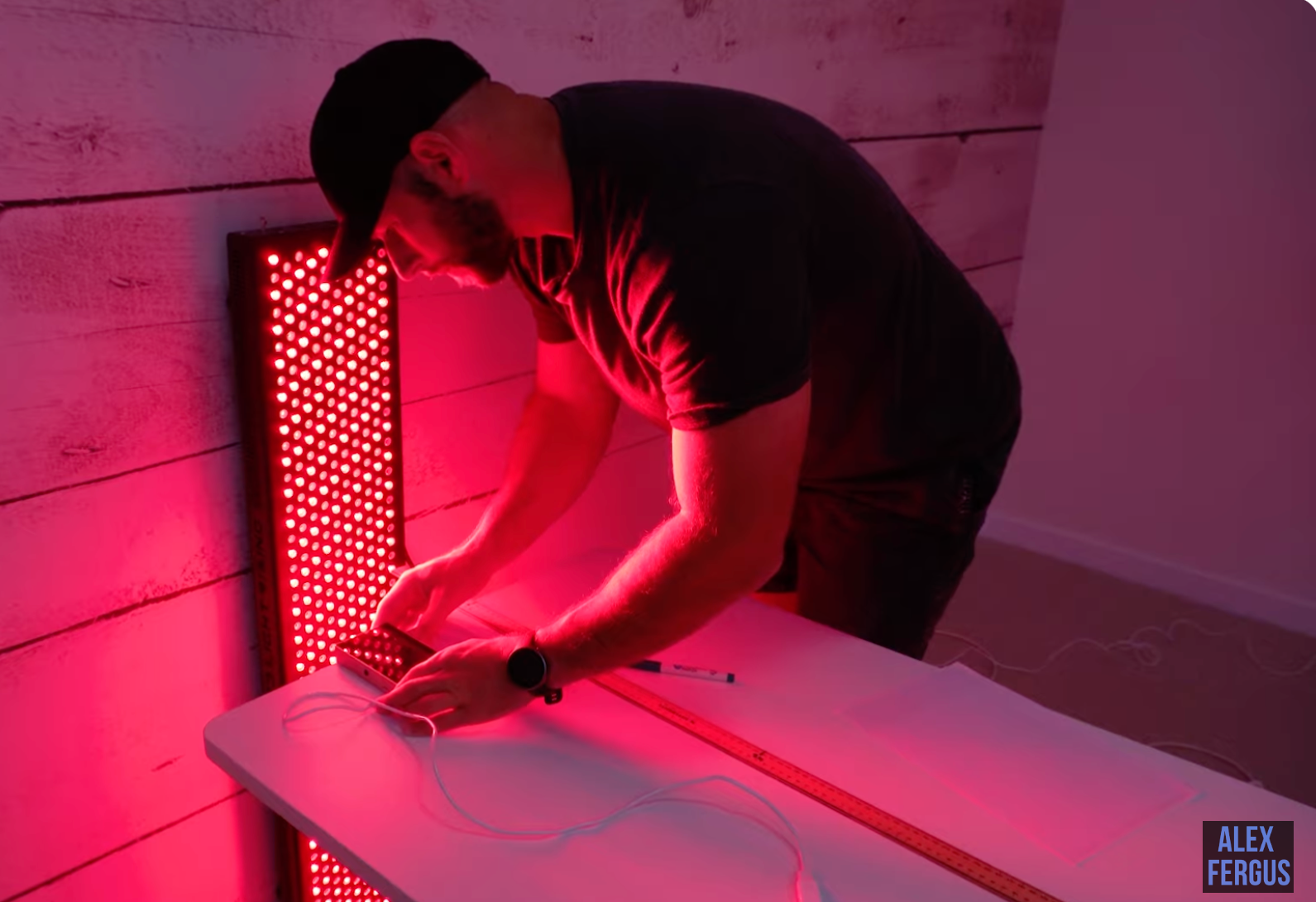
Larger panels maintain strong light distribution across a wider area, ensuring consistent and effective treatment without repositioning. This distinction is a game-changer for anyone seeking efficient, full-body therapy.
Challenges of Larger Panels
While the benefits of large panels are clear, they come with their own set of challenges:
- Space Requirements - Large panels are heavy and require substantial space. A full-body panel might weigh 70 to 80 pounds or more. This could be a significant limitation if you live in a small apartment or don’t have a dedicated area for mounting or positioning such a panel.
- Transportation and Installation - Moving a large panel can be tricky. Getting it off the truck and into your home can be cumbersome and inconvenient, especially if you live in an upstairs unit.
- Cost Considerations - High-quality large panels come with a hefty price tag. For example, a Rojo Therapy Refine 3600, with 1200 LEDs, costs around $3,300. Meanwhile, a smaller Rojo Therapy Refine 900 with 300 LEDs might cost $1,000 to $1,200—a third of the price but only a quarter of the size.
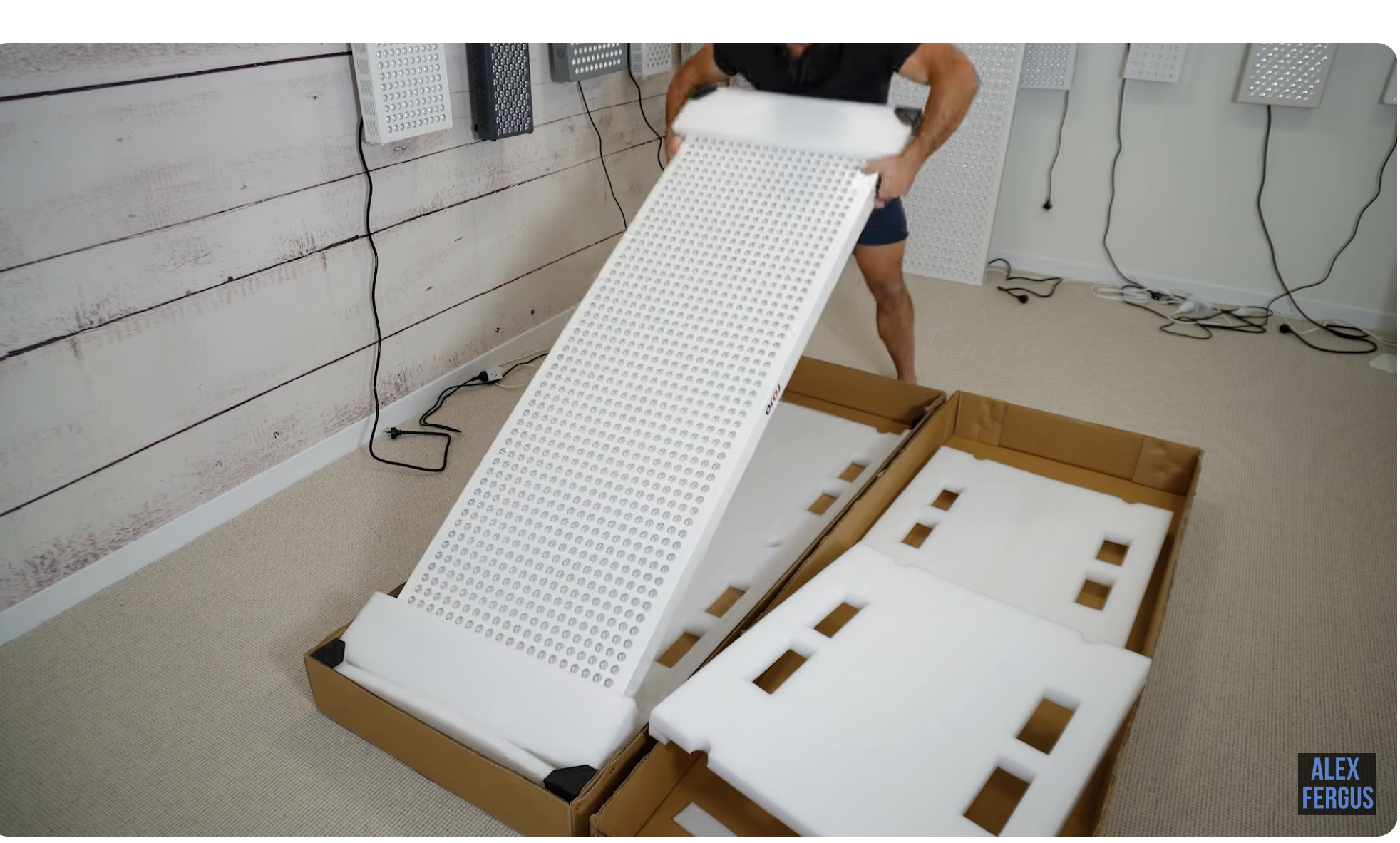
Starting Small: A Gradual Approach to Red Light Therapy
If a full-body panel isn’t feasible due to budget or space constraints, starting with a smaller panel is still a valid option. Many people, including myself, began their red light therapy journey with a modest setup.
My first panel had only 150 LEDs, yet I experienced noticeable benefits.
Over the years, I gradually expanded my setup, eventually building a full-body multi-light array with four BioMax 900 panels. This process took time but allowed me to achieve my goals without a significant upfront investment.
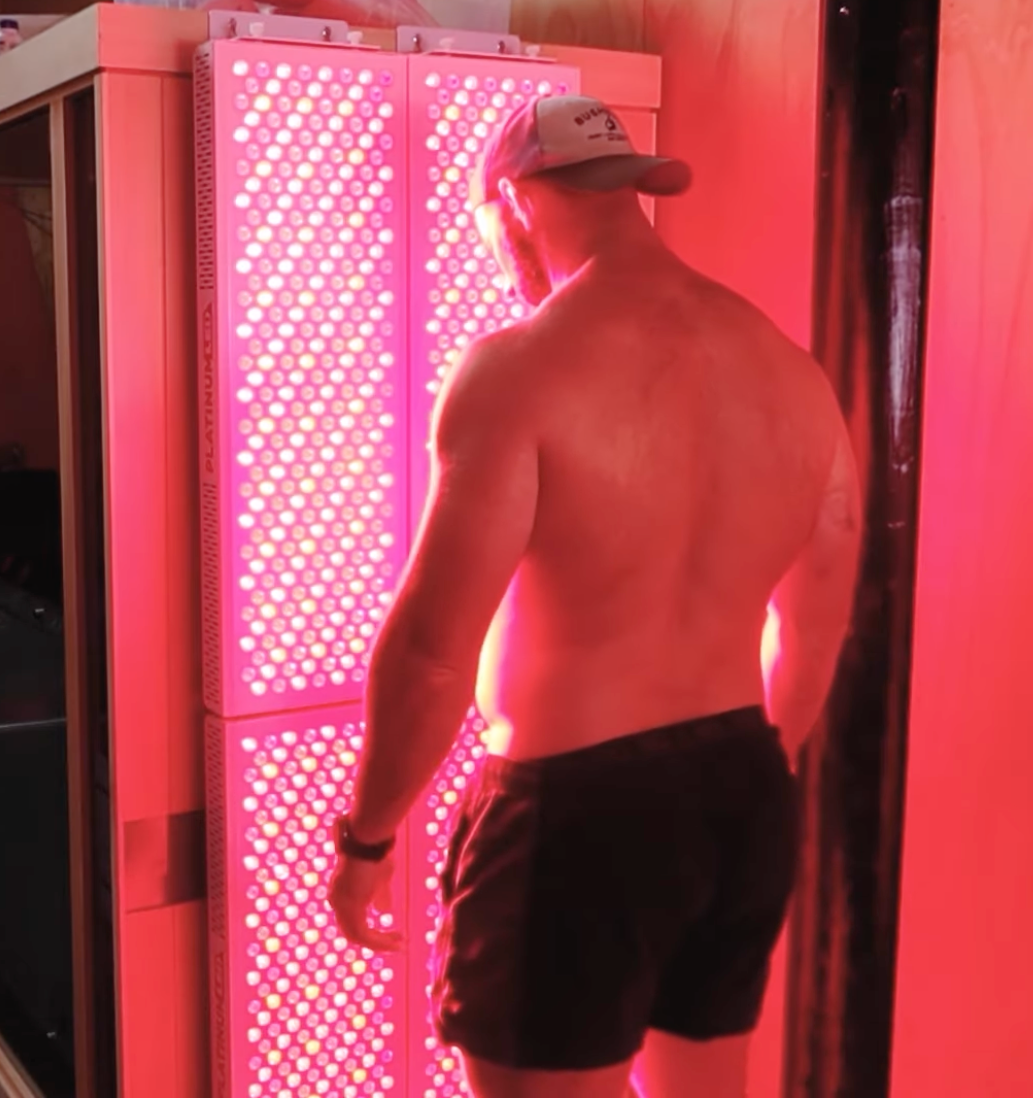
Smaller panels can still deliver excellent results, especially if you’re strategically using them. For example, you can:
- Focus on specific body parts in shorter, targeted sessions.
- Rotate the panel to treat different areas over multiple sessions.
This approach allows you to enjoy the benefits of red light therapy while working within your current budget and space limitations.
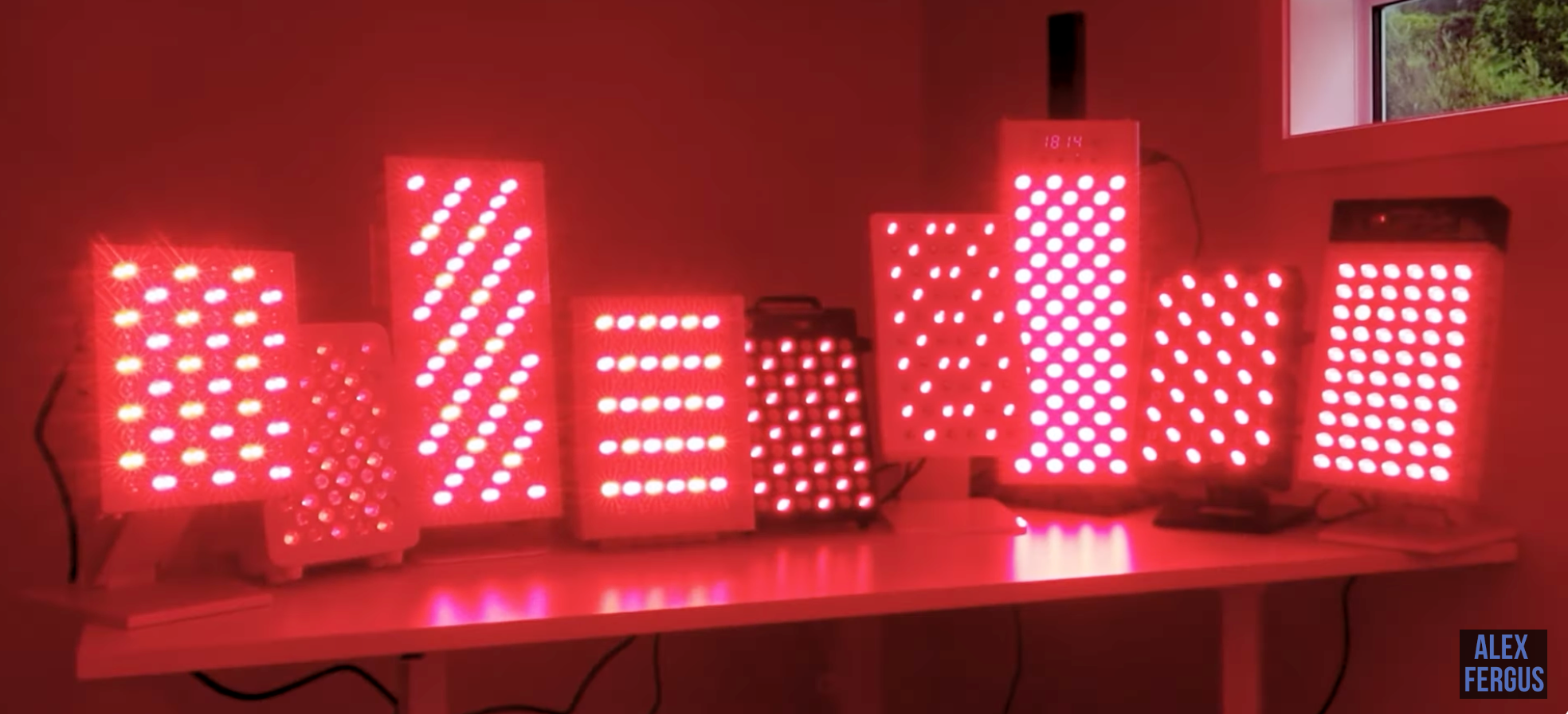
Mid-Sized Panels: A Balance of Convenience and Effectiveness
If you’re looking for a compromise between a small and large panel, mid-sized panels offer a practical compromise. These panels are easier to handle and require less space than their larger counterparts, yet they still provide broader coverage than smaller panels.
A mid-sized panel can be a practical compromise for those looking for something in between. One such option is the Block Blue Light Elite panel.
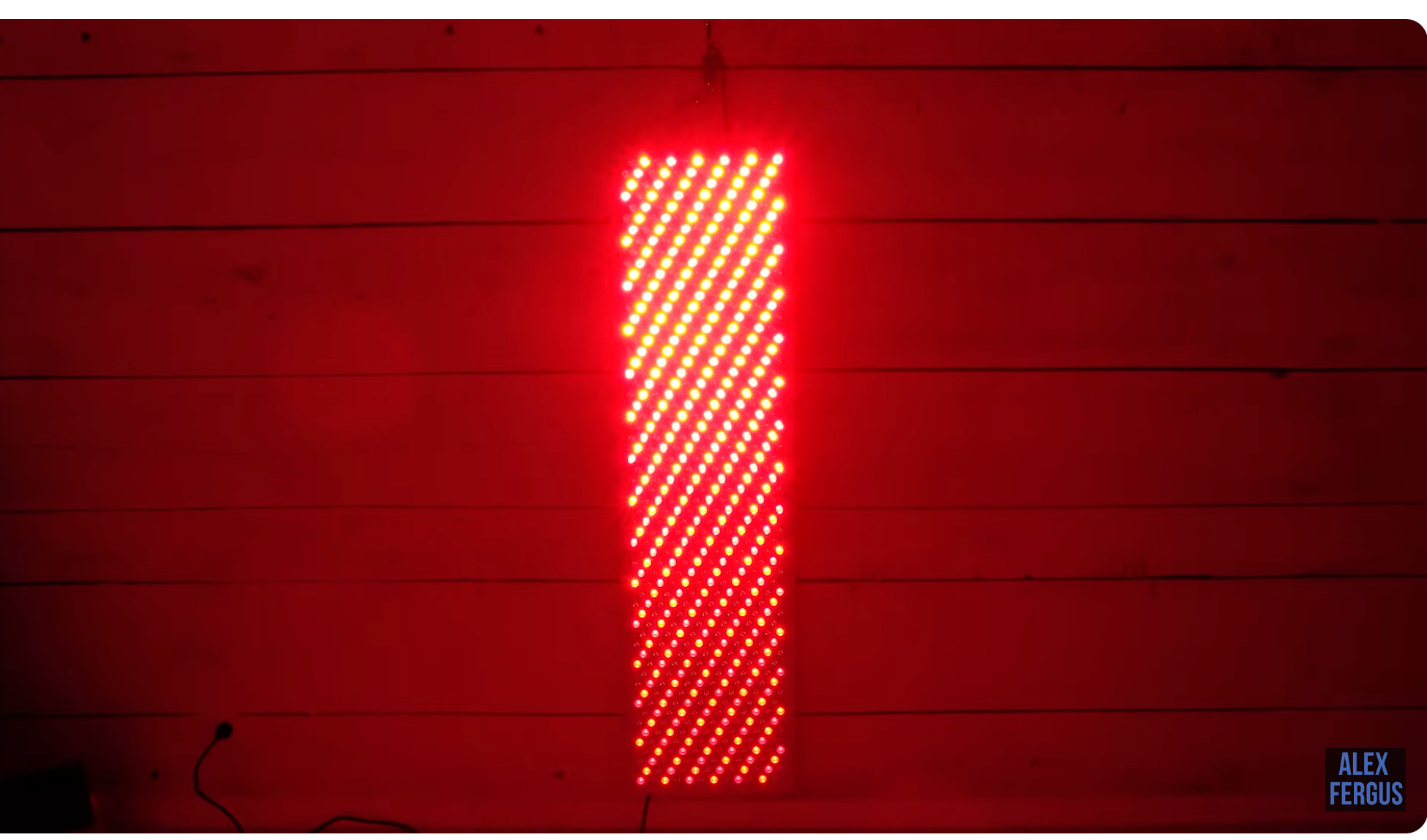
This panel is larger than a standard small panel but still much smaller than a full-body setup. Here’s how it compares:
✔ Lower price point than a full-body panel.
✔ Lighter and easier to move—one person can set it up or hang it from one hook.
✔ More placement options—can be used on a wall, stand, or door hook.
However, there are some limitations:
• Not full-body coverage—the bottom LEDs only reach the ankles, and the top LEDs stop around the hips.
• It doesn’t provide full shoulder-to-shoulder exposure, but it covers the torso, arms, and shoulders, which remain untreated.
• Requires repositioning—you’ll still need to move around during treatment to achieve full-body benefits.
This panel can deliver 80% of the benefits at a lower cost for users who don’t need to treat every part of the body. However, if full-body optimization is your goal, a larger panel remains the better option.
Cost Efficiency: Why Bigger Panels Offer Better Value
From a cost perspective, larger panels often deliver better value per LED and watt. Let’s compare:
- The Rojo Therapy Refine 900 costs approximately $3.90 per LED.
- The Rojo Therapy Refine 3600 costs $2.80 per LED.
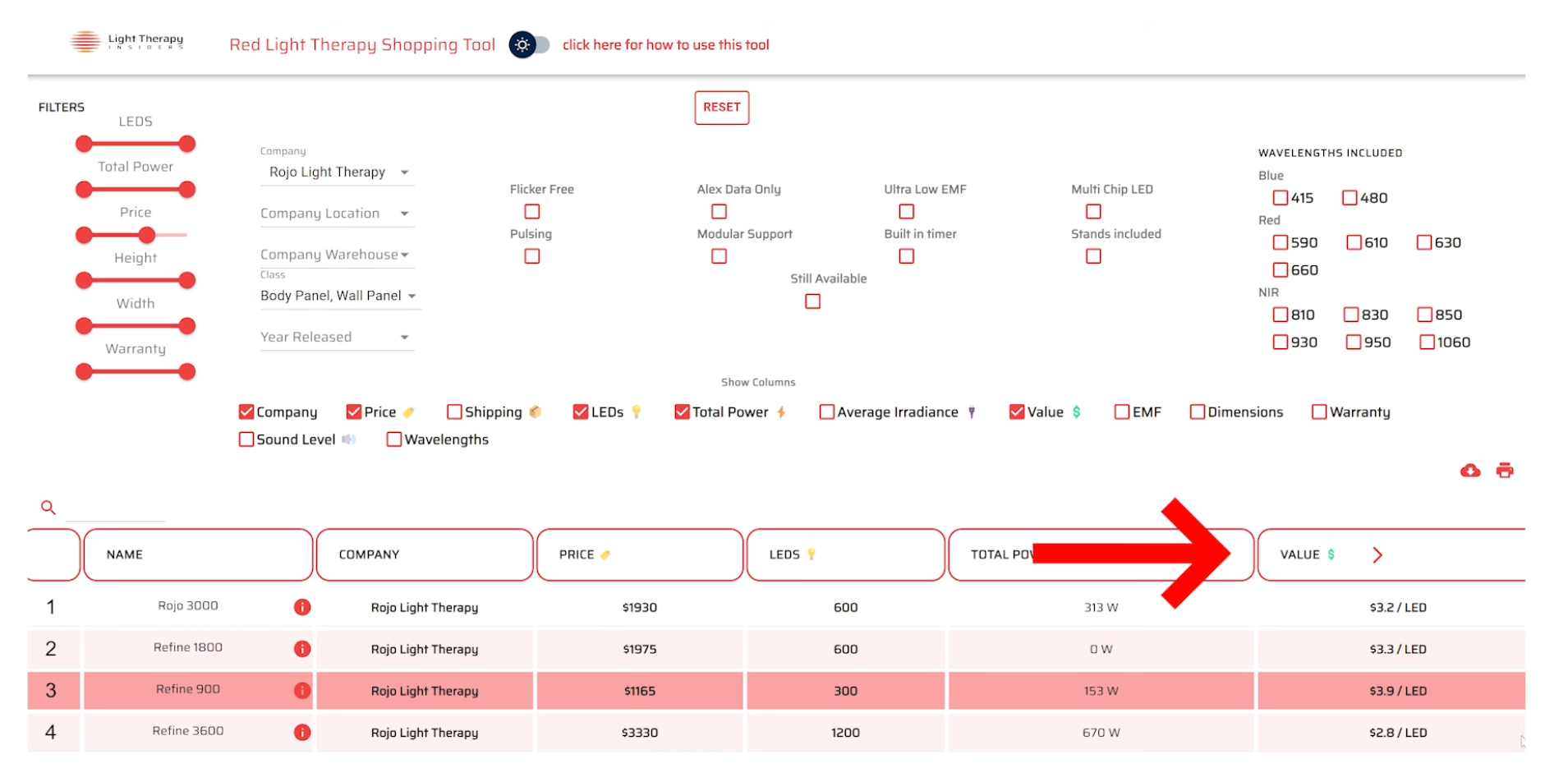
Similarly, in terms of cost per watt of therapeutic red light:
- The smaller panel has a value of $7.60 per watt, which is already excellent.
- The larger panel offers an even better value at $5 per watt.
If your budget allows, investing in a larger panel is a classic “buy once, cry once” scenario. You’ll save time, achieve better results, and maximize the value of your investment in the long run.
Watch this!
Modular Expansion: Building a Full-Body Setup Over Time
If a large panel is beyond your current budget, consider modular options. Many red light therapy panels are designed to be combined into larger arrays, allowing you to start small and gradually build a full-body setup.
For instance, you could:
- Start with a smaller panel.
- Add a second panel six months later.
- Continue expanding until you’ve created a full-body array.
While this approach requires some assembly and may result in minor gaps in light coverage, it’s a flexible and cost-effective way to achieve your goals.
Conclusion: Finding the Right Panel for You
Ultimately, the best red light therapy panel for you depends on your space, budget, and goals. A large panel is ideal if you’re seeking maximum efficiency and convenience. However, smaller or mid-sized panels still offer significant benefits and can be expanded over time.
Consistency is key in choosing a compact, mid-range, or full-body panel. By incorporating red light therapy into your routine, you’re investing in your health and well-being, which will pay off in the long term.
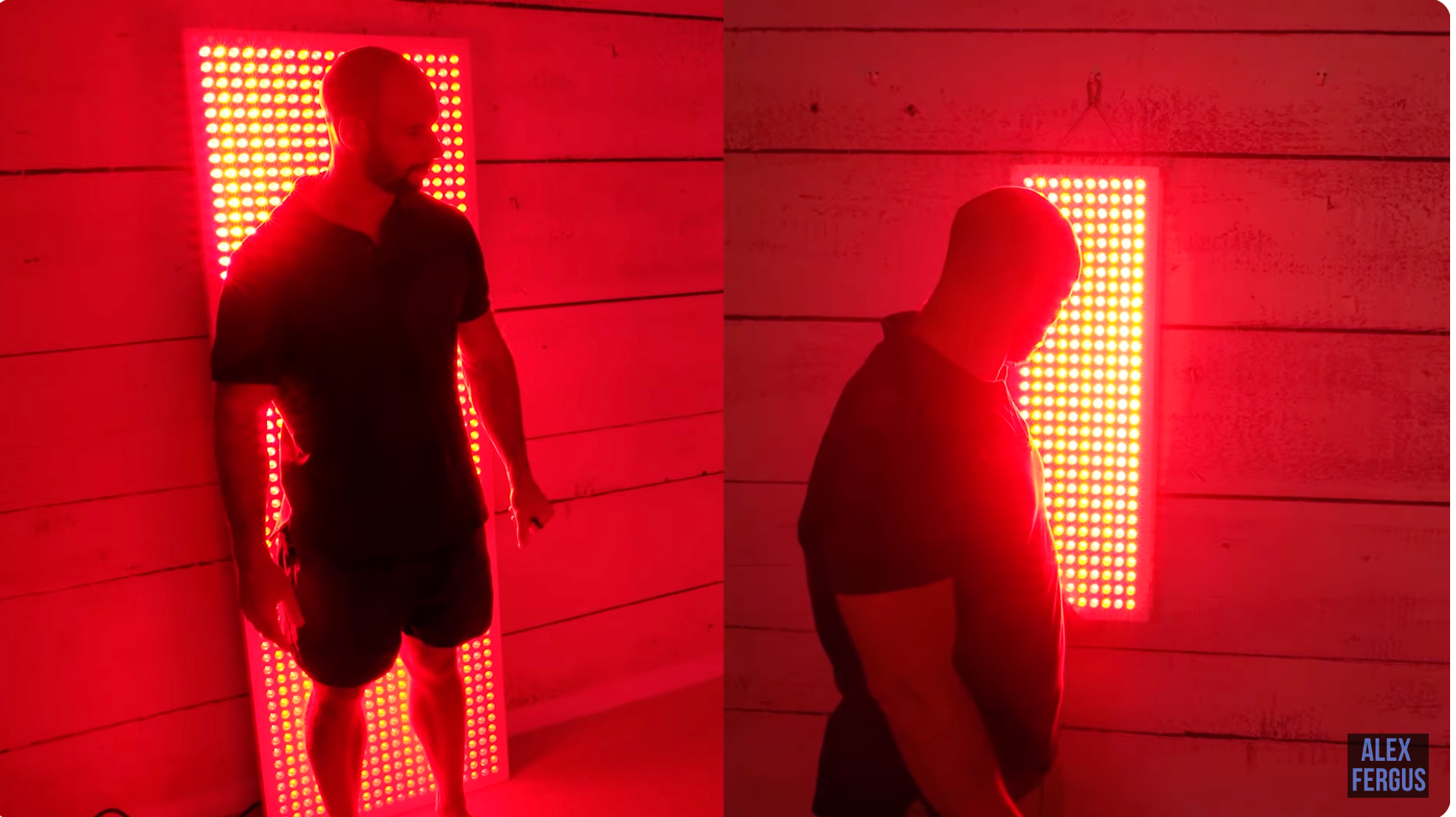
Items Mentioned In This Article:
1. PlatinumLED BioMax 900 - a unique code is generated after clicking the link.
2. Rojo Light Therapy Refine 900 - code ALEX saves
3. Block Blue Light Powerpanel Elite XL - code ALEX saves.
Found This Interesting? Look At These Articles:
⭐ Red Light Therapy Pros & Cons: The Complete List
⭐ How Often Should You Use Red Light Therapy Explained
⭐ Red Light Therapy Dosing Chart: The Raw Data From Hundreds Of Studies
⭐ Red Light Therapy Vs Infrared Sauna: Everything You Need To Know
Consider These YouTube Videos As Well:
⭐ How To Choose A Red Light Therapy Device: COMPLETE Guide
⭐ Rouge G3 Ultimate Review
⭐ Targeted Red Light Treatment = Full-Body Benefits?
⭐ Red Light Penetration: How Much Light Do Clothes Block?
⭐ Best Red Light Therapy Panel 2024? EPIC Comparison
Alex Fergus wrote this blog post. Alex is an ISSN Sports Nutrition Specialist, Fitness Professional, and certified Superhuman Coach who continues to expand his knowledge base and help people worldwide with their health and wellness. Alex is recognized as the National Record Holder in Powerlifting and Indoor Rowing and has earned the Australian National Natural Bodybuilding Champion title. Having worked as a health coach and personal trainer for over a decade, Alex now researches health and wellness and shares his findings on this blog.
